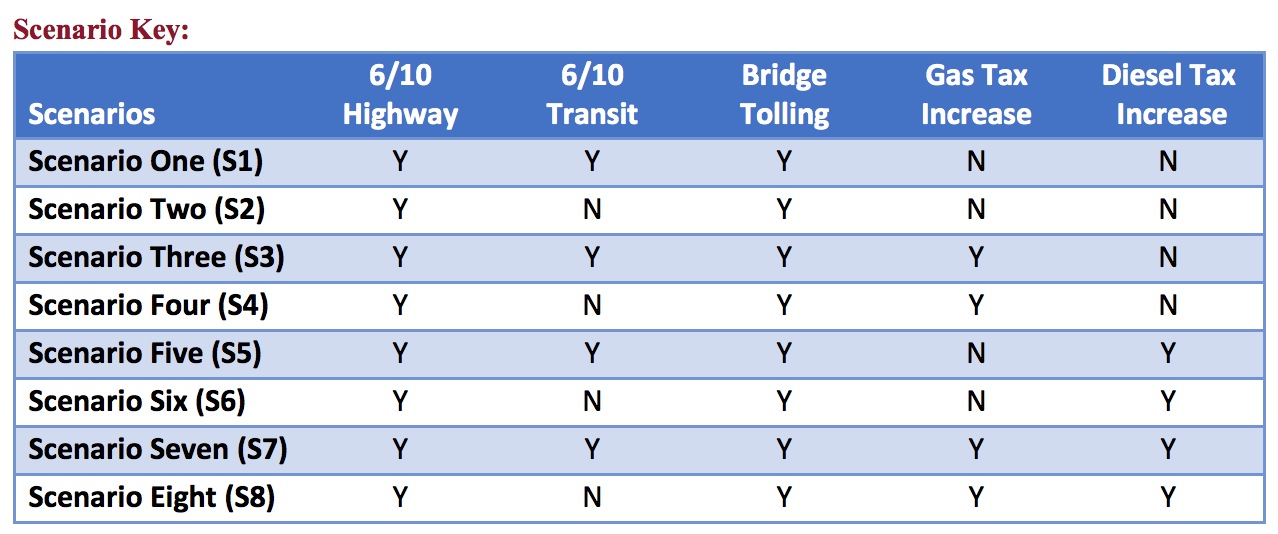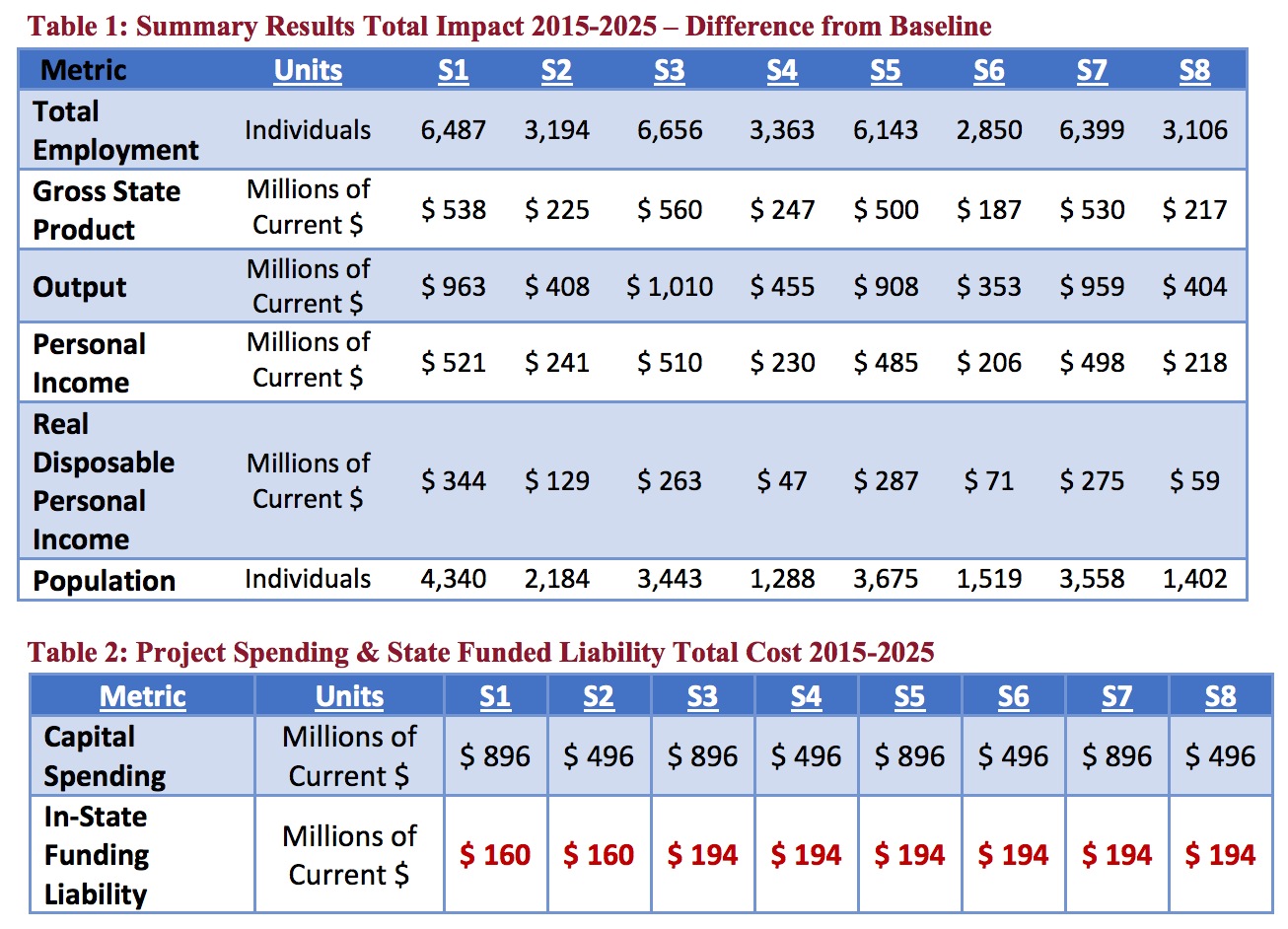RHODE ISLAND DEPARTMENT OF REVENUE
REGIONAL ECONOMIC MODELS, INC.
Executive Summary
Rhode Island ranks last in the nation for overall bridge condition. The RhodeWorks accelerated transportation plan seeks to achieve a goal of 90% structurally sufficient bridges, the federally mandated minimum, by 2025, with the intention of improving safety, making Rhode Island more attractive for businesses and to benefit local consumers. The dilapidation of Rhode Island’s transportation infrastructure has reached the point where if many of the failing bridges are not repaired soon, the costs of bridge improvements will grow as the state will soon be required to replace, instead of repair, its transportation infrastructure.
Regional Economic Models, Inc. (REMI) was engaged by the Rhode Island Department of Revenue’s (DOR) Office of Revenue Analysis (ORA) on behalf of the Rhode Island Department of Transportation (RIDOT) to model the economic and demographic effects of the RhodeWorks transportation infrastructure improvement and restoration plan. Our analysis includes the economic and demographic impacts over an 11-year time period associated with: 1) the construction of transportation infrastructure capital improvements; 2) project financing options, 3) avoided costs of bridge closings and postings to the state; and 4) benefit programs to support the trucking industry included in the RhodeWorks proposal. DOR, the Rhode Island Department of Administration’s (DOA) Office of Management and Budget (OMB), and RIDOT provided the necessary data for our analysis. REMI used our PI+ model of the Rhode Island state economy and calibrated the control forecast to closely adhere to the State’s consensus economic forecast as adopted at the May 2015 Revenue Estimating Conference. REMI consulted with RIDOT to best reflect the types of project spending variables to be used for the analysis. ORA provided REMI with various points of clarification pertaining to data inquiries, financing options, and avoided costs of bridge closings and postings. ORA and OMB played a fundamental role in making this analysis possible through the acquisition of data and the review of the economic impact simulations.
After building the new consensus forecast baseline control, REMI modeled a variety of project components and potential outcomes that have been aggregated to the eight scenarios identified in the Scenario Key on the following page. All scenarios account for various futures that outline the difference between RhodeWorks and the alternative constrained resources transportation plan. As such, the results included in the report are not based on the aggregate total spending inputs of the RhodeWorks proposal, but rather, the differences between the RhodeWorks proposal and the constrained resources transportation plan that will be executed in the absence of RhodeWorks.
All of the proposed RhodeWorks scenarios analyzed by REMI include the rebuilding of the Route 6/10 highway corridor (apart from the transit system) as well as other transportation network restorations and infrastructure improvements.
Scenario One depicts the complete RhodeWorks proposal including additional federal funding of $400 million to build the Route 6/10 Transit system. In Scenario One, all of the financing for these improvements would be via the institution of a bridge tolling regime on the State’s major highways and interstates. The bridge tolling program would apply to 17 or so bridge overpasses and/or underpasses with tolls only charged to full size semi-tractor trucks with attached trailer (Federal Highway Administration Class 8 trucks and above). The revenue generated from the 100 percent tolling financing mechanism was estimated by RIDOT to be $60 million annually.
Scenarios Three, Five, and Seven have identical transportation infrastructure capital spending plans as Scenario One, but finance these improvements via a combination of tolling and gasoline and/or diesel tax increases. In these scenarios, the revenue generated from increased gasoline and/or diesel fuel taxes were estimated by ORA and OMB to be $12.5 million annually leaving $47.5 million in revenue to be generated by the tolling financing mechanism. No consideration was given to whether the increased gas and/or diesel tax revenue estimates provided by OMB and ORA would actually be realized given retail motor fuel price competition from Massachusetts. Nor was the stability of the gasoline and/or diesel tax revenue stream considered, even though, in general, the consumption of gasoline has been declining over time.
Scenario Two has the same project financing guidelines as Scenario One; however, in Scenario Two it is assumed that the federal government will not provide the $400 million necessary for the 6/10 Transit system and as such, no 6/10 Transit system would be developed. Scenarios Four, Six, and Eight have the same project financing guidelines as Scenarios Three, Five, and Seven but without the federal provision of $400 million for the 6/10 Transit system.
Table 1, provides a summary of the economic and demographic simulation results for each of the eight scenarios. All dollars are rounded to the nearest million. Employment and population are reported in individual units of measurement. One job equals an average job count as reported by the Bureau of Economic Analysis for one year of employment.3 The results reflect the difference between the current constrained resource transportation plan and the RhodeWorks proposal under the various financing options included for each of the eight scenarios.
Download full version (PDF): The Economic Impact of RhodeWorks
About the Rhode Island Department of Revenue
www.dor.ri.gov
The mission of the Department of Revenue is to administer its programs, and consistently execute the laws and regulations with integrity and accountability, thereby instilling public confidence in the work performed by the department…We accomplish this mission by fostering innovation our operations, developing cooperative relationships with other public and private entities, clearly communicating with the public, and treating everyone fairly and with respect.
About Regional Economic Models, Inc.
www.remi.com
At REMI, we’re inspired by a single goal: improving public policy. That’s why we’re dedicated to understanding how government actions and other changes affect the world around us. Our belief is that improved knowledge and information will lead to better decisions. Our work is to develop and support the use of economic models that inform government and corporate decisions.
Tags: Regional Economic Models Inc., REMI, Rhode Island, Rhode Island Department of Revenue, Rhodeworks, RI








 RSS Feed
RSS Feed